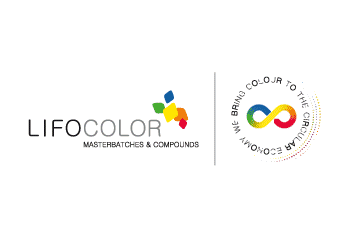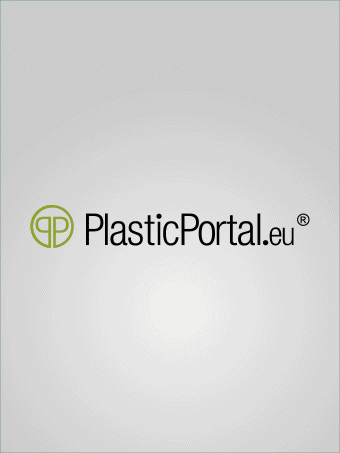High-end injection molding for in-vitro diagnostics
The BioSciences division of Sony DADC in Salzburg/Anif was taken over by the German laboratory equipment manufacturer STRATEC Biomedical AG in 2016 and has since continued as STRATEC Consumables GmbH. Sony DADC's partially acquired injection molding and development capacities are used to manufacture high-precision consumables for analytical laboratories.
Examples include biomolecular specimen holders for a variety of analyzer types or laboratory chips with microfluidic functions. In order to be prepared for the quality levels of future device generations in this product segment, STRATEC opted for the precision injection molding machines of Netstal Maschinen AG in Switzerland for the last capacity expansion.
The consumables for laboratories for the analysis of human samples produced in large series by STRATEC Consumables are matched to the function and accuracy class of the instrument technology used for this purpose. Extremely high standards in terms of both optical quality and geometric precision must be met. A prominent example are the sample carrier plates in microscope format 75 x 25 x 2 mm.
Their quality and functional scope is tailored to the interaction with the MALDI-TOF process. (MALDI-TOF stands for Matrix–Assisted Laser–Desorption–Ioniziation, and TOF stands for Time of Flight). The human samples (cell cultures) on the sample carrier plate are bombarded by a pulsed laser, which vaporizes and ionizes the mixture of carrier material and biomolecules.
The energy applied by the laser pulse then moves the ion mixture in a tubular-shaped configured electrical field to a detector. The flight time of the molecules is measured along this path. This is directly related to the molecular mass and allows the recording of a mass distribution that allows conclusions to be drawn about the sample composition. (Functional diagram in the MALDI-TOF fact box).
In the concrete case, 48 deposition points for molecular samples (12 x 4 matrix) are located on a sample carrier, all of which must provide the same starting point for the analysis process. This is only possible if the sample carriers remain flat and dimensionally stable over all specimen positions within narrow tolerances without distortion during laser bombardment.
Any change in the starting position for the trajectory would affect the accuracy and comparability of flight time measurements. In addition, the sample carriers must remain stable even at low temperatures without distortion. Sample plates are sometimes archived at -80 °C for several months and then analyzed for comparison purposes. This can only be guaranteed if the specimen holders have a maximum homogeneous and stress-free plastic structure. (Fig .1)
 | |
Fig. 1: Despite their conventional appearance, the carrier plates for human sample analysis produced by STRATEC Consumables GmbH in large series are nevertheless high-precision plastic parts on which extreme demands are placed |
Derived from the Blu-ray disk
STRATEC uses the know-how and processes developed by Sony DADC for the production of optical storage media such as CDs, DVDs and Blu-ray disks, in particular precision injection molding in a cleanroom, thin-wall metal coating or printing.
However, unlike the DVDs, the sample carriers are not made of polycarbonate, but are made of conductive polypropylene to dissipate all static charges that could potentially interfere with the analysis system. This is followed by the coating of the surface with metal using the sputtering process (= physical cathode sputtering for the deposition of solid-state parametrics) in analogy to DVD production. Here, too, there are differences to DVD production, because DVDs are vaporized with aluminum and the sample carriers with stainless steel. This creates a constant reflection surface for the incident laser beam over all 48 deposition points.
Increasing requirements called for a reorientation
STRATEC Consumables CEO Dr. Christoph Mauracher: “By taking over a part of the Sony DADC production department, we were able to acquire indisputably high-quality machinery. However, as the requirements of our customers have grown with each new generation of analytical instruments, we had to draw on the production side and systematically explore potential for improvement. The next step was market research beyond high-quality injection molding, to the limits of what is currently feasible.
After detailed comparisons, the all-electric Swiss Netstal ELION injection molding machines ended up high on our shortlist, not least because of the impressive references for medical technology products, many of which have to meet almost the same quality standards as our products.”
Injection molding precision thought ahead
How did Netstal score points? The answer to this question comes from graduate engineer (FH) Thomas Aschenbrenner, Netstal application engineer for medical and packaging applications: “The necessary dimensional and shape precision of the sample carriers and laboratory chips with integrated microfluidic structures required for the analysis technology place the highest demands on metering, pressure control and pressure switching and, in particular, on the repeatability of the process.
In order to meet this requirement, Netstal generally relies on pressure sensors for all machines, which are optimized by its own development contributions and used in combination with a controller architecture that is matched to this. In addition, this technology package is not used as standard for all machines in the same configuration, but is matched to their size. This ensures the currently highest dynamics during injection and ultra-precise process control. The stable gearbox design and a plasticizing unit with a temperature stability of +/- 0.25 °C guarantee that almost identical parts are continuously produced without the need for additional control algorithms to compensate for external influences (Fig. 2 a Fig. 3).
 | |
Fig. 2: The sensors adapted by Netstal in combination with a specifically tuned control architecture and stable temperature control provide the prerequisites for ultra-precise process control |
 | |
Fig. 3: The Netstal injection control system allows force-dependent pressure switching, independent of the material properties, thus guaranteeing a very stable part weight |
ELION 800 – Precise and cleanroom-compatible
Specifically, STRATEC decided to manufacture this product for the all-electric ELION 800 injection molding machines with 800 kN clamping force in combination with one Powermaster 60 and one Powermaster 130 injection unit each. With a 6-axis robot from Stäubli and the parts transport periphery from STRATEC, the machine was upgraded to a production cell (Fig. 4). Machines and peripherals are designed for operation in a class ISO 5 clean room (Fig. 5).
 | |
Fig.4: The injection molding cell consists of the injection molding machine and removal device with connected storage and stacking peripherals |
Its most striking features are the smoothness of the sheet metal surfaces, the white special varnish, as well as the machine extension, all measures to simplify regular cleaning. Particle sources were eliminated by the general omission of spindle drives and toothed belts, the encapsulation of all bearing points and closed lubricating oil circuits. Galvanically sealed mold plates provide optimum protection against corrosion. All connections for water, air and electricity are fully integrated in the machine housing. And the single-cycle tool monitoring via flow, pressure and temperature sensors ensures consistently high product quality.
 | |
Fig. 5: STRATEC Consumables relies on a Netstal ELION 800 clean-room injection molding machine for the production of its high-precision sample carrier plates, which has been upgraded to a production cell by means of a 6-axis robot and part depositing peripherals |
Efficiency targets achieved
Dr. Mauracher added: “The high overall system efficiency and reliability of the ELION machines enable consistently high part quality at the lowest unit costs. It is impressive that we were able to achieve high production efficiency after a short start-up time. The high shot-to-shot consistency allows continuous production within tight tolerances and minimizes any rejects (Fig. 6). It is also good to know that the machine could run faster than it has to do with the described product. The theoretical value of 1.3 s dry running time at a stroke of 287 mm is given in the technical data, which is quite remarkable. We also appreciate the smooth running of the machine. From this point of view, the slightly higher acquisition costs were more than justified."
 | |
Fig. 6: Horst Bar, the project manager responsible at Luger GesmbH, graduate engineer (FH) Thomas Aschenbrenner from Netstal Application Technology and STRATEC Consumables CEO Dr. Christoph Mauracher can look back on a successful production start-up of the Netstal production cells |
Fact box: MALDI-TOF mass spectrometry method
The MALDI-TOF mass spectrometry method
 | |
Fig. 7: Functional diagram of the MALDI-TOF mass spectrometry, 1) Specimen holder, 2) Cell sample + light-absorbing matrix, 3) Pulsating laser, 4) Grid electrodes, 5) Ring field for sample acceleration, 6) Deflectors (deflection unit), 7) Mass divider, 8) Reflectron for reversing the ion flight direction. This reduces the influence of the kinetic energy distribution on flight time. 9) Linear ion detector, 10) Reflection ion detectors |
About Netstal Maschinen AG
In 1992, the German KraussMaffei Group acquired a majority stake in Netstal-Maschinen AG.
The current range of machines in the clamping force range between 800 and 8000 kN for high-precision injection molding with a focus on high-speed packaging and medical products and the manufacture of PET preforms.
STRATEC Consumables GmbH in Salzburg/Anif is part of STRATEC Biomedical AG and a leading global OEM manufacturer of intelligent consumables for applications in the fields of diagnostics, life sciences and medical technology. The company has high-end resources in nano- and microstructuring, coating technology, polymer science applications and automated manufacturing.
- autor:
- LUGER spol. s r.o.
















.jpg)

